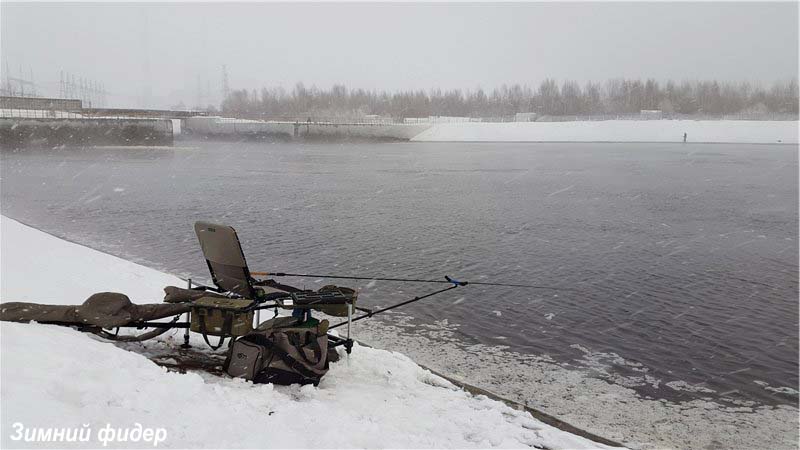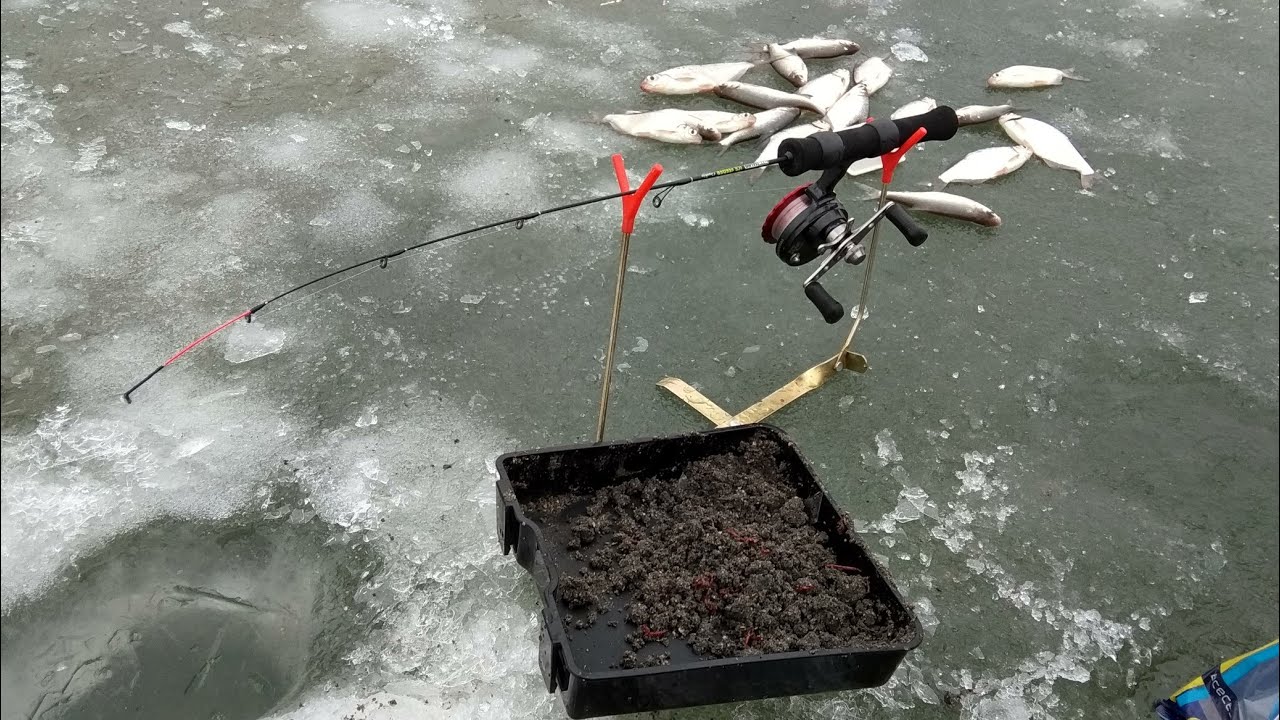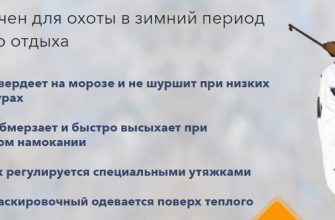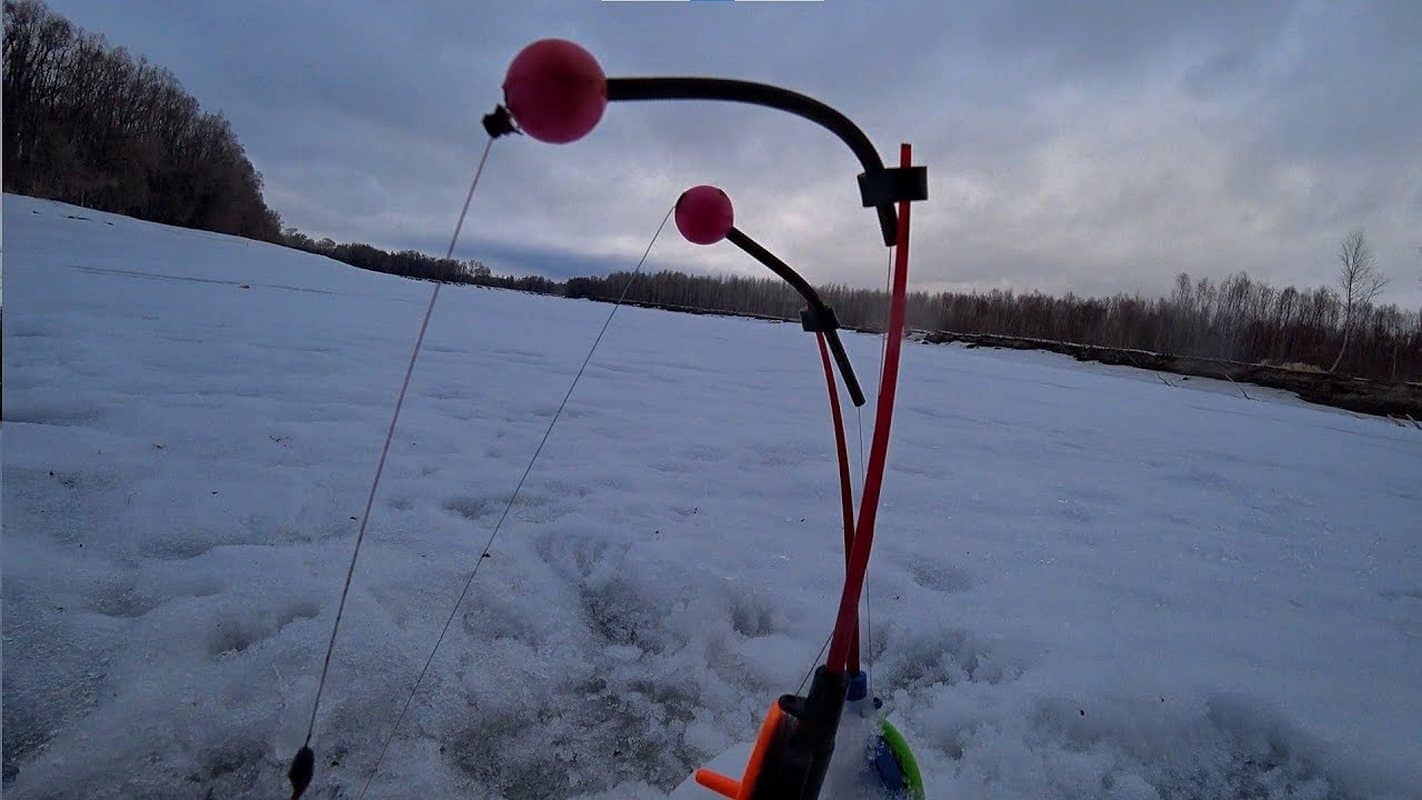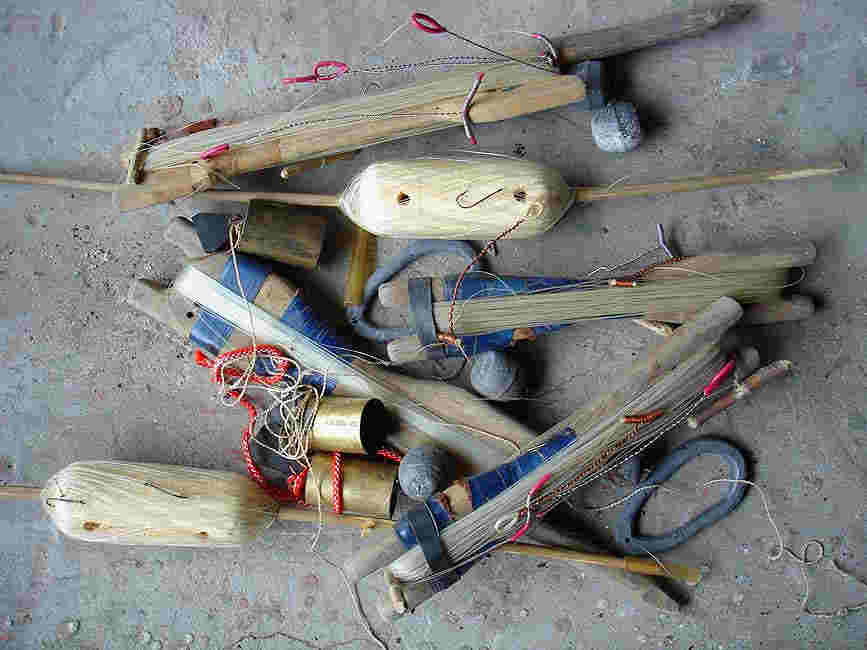Feeder fishing is
very popular with modern fishermen
, but only a few practice this method of fishing in winter, both from ice and in open water. How much – in vain! Winter feeder (Ice feeeder) is a catchy tackle, with the skillful use of which, you can catch fish where
you will probably be left with nothing on an ordinary float rod . There is nothing complicated in this method of fishing, while experienced anglers often do not purchase an ice feeder, but make tackle and assemble the rig themselves. Feeders for a winter feeder are used the same
as for fishing in summer , but they are slightly altered, and in the role of rods, ordinary long winter fishing rods are used, which are equipped with
reelsand gatehouses. The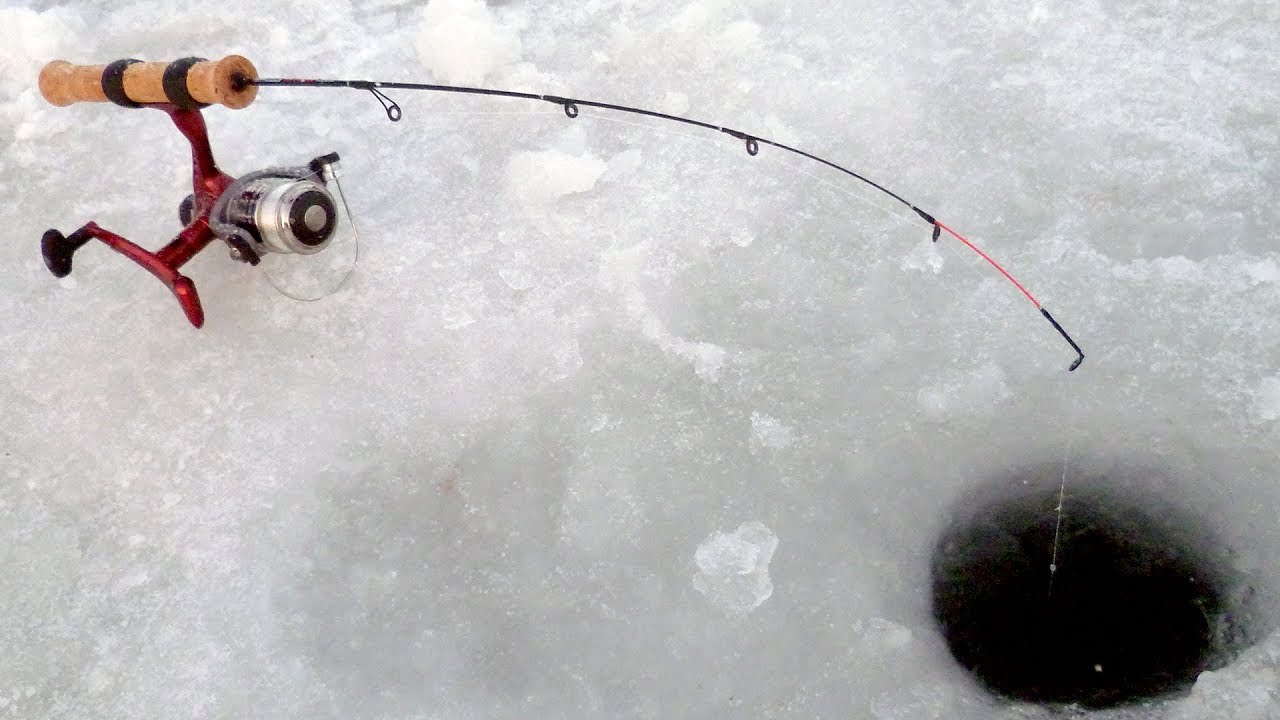
- Features of rigging and installation of the under-ice feeder
- Self-made feeder for fishing in winter
- Lines used
- What kind of rod is needed
- Trough
- Equipment and installation of a winter feeder
- Hooks
- Leash size
- Nod
- Used baits and baits
- Tactics and technique of feeder ice fishing
- Feeder fishing in open water in winter
- Поделиться ссылкой:
Features of rigging and installation of the under-ice feeder
The most effective winter feeder is for ice fishing in reservoirs where there is a variable current. Classic stationary springs are not suitable for this, since the behavior of the fish is constantly changing. So, for fishing with stationary springs, the angler needs to make several holes: for springs – above the current, for rods – below. When fishing on a feeder in winter, one hole is enough. Reels are used without spinning, small in size, with a correctly set friction brake. Ice feeder equipment includes:
- relatively short fishing rod (about 60-130 cm) with a spinning reel;
- the whip is in the region of 10-15 cm;
- a bright and hard nod (may be absent, in this case the signaling device is a nod);
- stand for a winter feeder;
- hook;
- main line;
- feeder;
- leash.
Self-made feeder for fishing in winter
A shy fish will not take coarse rigging, and delicate rigging often fails. We need a balance. It is necessary to make sure that the rig works equally well on ponds and rivers. The long rod, comfortable in summer, is not used. The winter feeder rod should be short with a whip at the end. A sensitive whip is used to catch small things, but the tip of the fishing rod when
fishing for bream , large
roach or carp should be elastic and very hard.
Lines used
As a rule, when installing feeder tackle for ice fishing, not thick monofilament lines with a section of 0.14 mm are used. But there are nuances. For catching bream, perch, bark, roach, this thickness is small, so this line is used only as a leash. And the main one is set in the region of 0.16-0.22.
What kind of rod is needed
Any winter rods of sufficient length will do, it is necessary that they have a strong reel seat and a comfortable handle that does not freeze in frost and does not slip in the palm of your hand. It is also worth paying attention to the rigidity of the whip, since fishing will be carried out using a feeder-load. Often fishermen equip the legs for the fishing rod, on which it is convenient to put the rig above the hole. Some simply use pieces of ice to make a small slide with a groove in the center, which also serves as a good support for small rods.
Trough
When fishing from ice, large feeders intended for summer fishing are not used. Long-distance casting is not needed, it is undoubtedly easier to overfeed the fish, at the same time they scare the fish away, while the consumption of the bait mixture in winter is much less, unlike in summer. You need to choose small feeder bins, otherwise the fish, oversaturated, will lose interest in the bait on the hook. In most cases, feeders weighing 10-30 grams are suitable.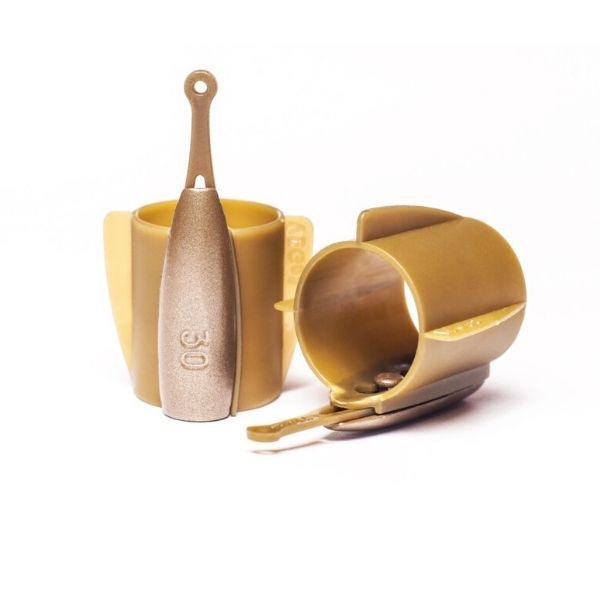
Recommendation: Professional anglers choose plastic feeders with little or no holes. In them, it is easier to hammer the bait with your fingers, while it is slowly washed out in the course.
Equipment and installation of a winter feeder
An under-ice feeder implies the use of summer rigs, as a rule, 2 types of installation are used:
- Paternoster Gardner.
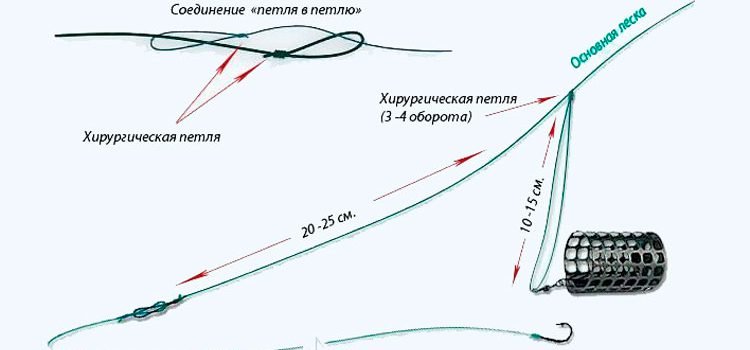
- Asymmetrical buttonhole.
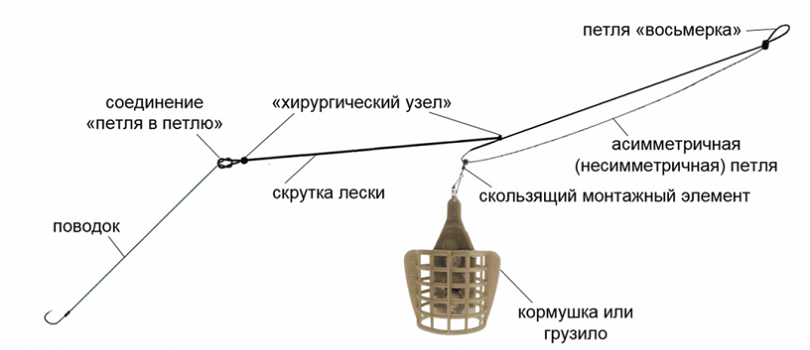
The asymmetrical loop is a little more difficult to execute, unlike Gardner, but much more sensitive. It is used for catching small fish and in bodies of water without flow. Taking into account that the winter feeder is a light version of the summer one, all the elements of the tackle must be much more delicate, and the leash loops and other accessories are much more delicate. This is perhaps the main difference from the summer equipment.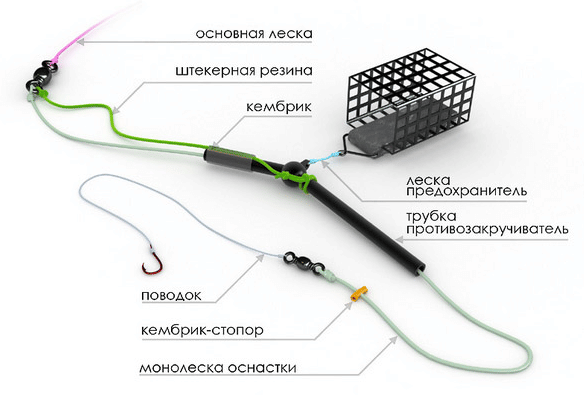
Hooks
The hook number is selectable in the range of # 12-16. Moreover, it is imperative to take into account the size and shape of the bait. Since even if the angler is sitting in a
tent , his hands still freeze and it becomes difficult to handle a very small hook. When choosing hooks, you must also take into account their weight, it is directly related to the current. If it is strong, the heavier ones are knitted, thanks to this they will press to the bottom and stay in place. The choice of hooks can be made already during fishing due to their installation of different weights and sizes.
Leash size
Like the hook, the size of the leash is chosen while fishing. It is determined taking into account the following factors:
- the presence of a current;
- fish activity;
- weight and size of the bait.
At first, leashes of about 50 cm are knitted, but if the active bites need to be shortened, this will simplify the handling of the bait and hook with frozen fingers.
Nod
A winter feeder involves the use of a quality gatehouse designed to contain the current. If the angle of diving of the line is chosen correctly, the angler will be able to see even a very delicate bite. Many anglers make their own sensitive gatehouses. It is important that the line must slide over the entire surface of the gate without any resistance.
A whip can be used as a nod in feeder fishing!
Used baits and baits
Fishing with a winter feeder involves the use of both animal bait and plant baits. The most popular are the typical winter baits:
- bloodworm;
- maggots;
- worms;
- dough;
- corn .
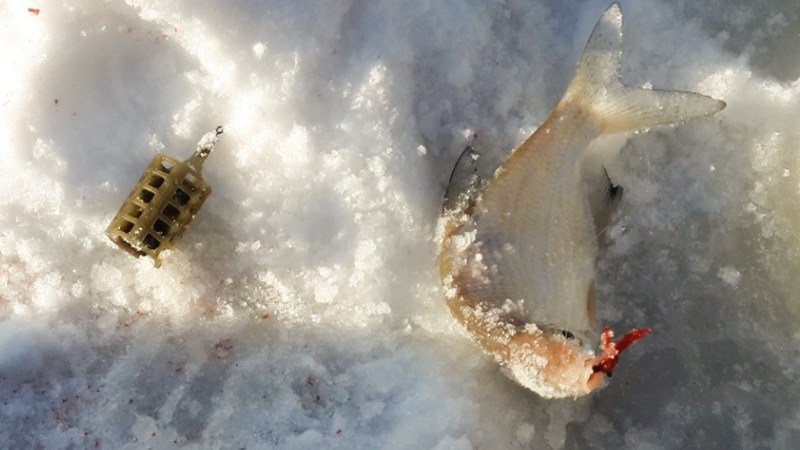
- the feed is 50% ground bread crumbs;
- bran – 15%;
- cake – 20%;
- semolina – 5%;
- ground rolled oats – 5%;
- the remainder is purchased groundbait.
Tactics and technique of feeder ice fishing
Fishing with a winter feeder begins with finding a promising place on the pond. An excellent reference point for fishing – areas on the surface of the ice, on which there are a large number of punched holes, left over from fishermen who fished in the past days. This means that it was in such places that the best biting was noted, while the fish was almost completely fed. If there is a lull in such places, you need to look for accumulations of fish in other locations. Why is it worth making holes in various places of a pond or river. If fishing is carried out on the first ice, it makes sense to explore places near coastal vegetation or the mouth of flowing streams.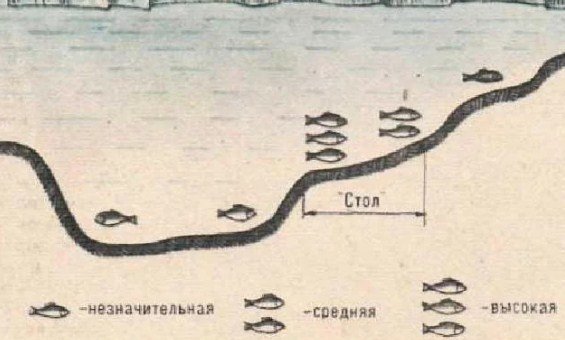
Feeder fishing in open water in winter
Fishing with feeder tackle in winter in open water is also possible. Fishing itself practically does not differ from fishing in summer. But it will be much more difficult to catch fish in winter, because in the cold season it is almost inactive. In all other respects, you need to do everything the same: find a promising place for fishing, explore the bottom topography, make starter feed. You can hide from the severe frost in a
fishing tent . Ovens or
heat exchangers can be used for heating
. To prevent the line and rings on the feeder from freezing, a special winter lubricant is used.
Feeders for winter fishingin open water, it is recommended to choose closed ones, made specifically for live food. If you fill them, for example, with bloodworms, then you can significantly increase the number of bites.